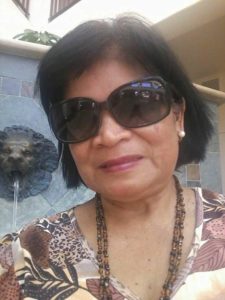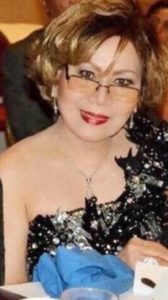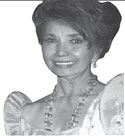IN private homes, we learn yet of another world — of quiet angels with gentle hearts that back home used to be teachers, bank tellers, office workers, civil engineers, registered nurses, and certified nurse aids, who handle with special acrobatic grace and cold arrogance, the fine dignity of their “clients” last moments.
 Not to torment with meaningless chemical assaults in their last days when they could no longer be at a “hospice,” not medical invasion of that life’s integrity, not one indignity imposed through carelessness or indifference…just the precise moment to let go, for that last plunge to let them fall easy and gentle. That is the human art, the caregiver at his or her best.
Not to torment with meaningless chemical assaults in their last days when they could no longer be at a “hospice,” not medical invasion of that life’s integrity, not one indignity imposed through carelessness or indifference…just the precise moment to let go, for that last plunge to let them fall easy and gentle. That is the human art, the caregiver at his or her best.
A caregiver in general terms is one who is responsible for the care of someone who has poor mental health, physically disabled or whose health is impaired by chronic sickness or old age. It can be an unpaid or paid relative or friend of the individual that help in their activities of daily living; those who provide unpaid care by looking after an ill, frail or disabled family member, friend, or partner.
In the so-called “sandwich generation,” there’s this genre of people who care for their aging parents while supporting their children.
 But because of the declining standards of living and economy many caregivers are immigrant workers who toil long unregulated hours, underpaid who left their families that required care themselves which puts further stress and pressure, throw in the utter non support from social work and health services, and the fact that they remain hidden or invincible as undocumented aliens.
But because of the declining standards of living and economy many caregivers are immigrant workers who toil long unregulated hours, underpaid who left their families that required care themselves which puts further stress and pressure, throw in the utter non support from social work and health services, and the fact that they remain hidden or invincible as undocumented aliens.
They play many roles, while caregiving hands-on: health provider, care manager, friends, companion, surrogate decision makers and advocate, personal hygiene.
They manage medication personal hygiene, take them to their doctors, take care of household chores, meals or bills, for those who cannot do these things.
The running flaps and presumed conclusions over board and care and related health-oriented facilities make the choice of putting one’s trust in someone to care for loved one that has reached across roads one of life’s most difficult decisions.
 While most who work in the field are caring and well trained, still there is no denying the essential truth of such places.
While most who work in the field are caring and well trained, still there is no denying the essential truth of such places.
You can choose your board and/or care facility or convalescent hospital by collecting referrals, talking with social workers and learning the ins and outs about caregivers and consumers.
Let me tell you about a factual nugget. About 90 percent of board and care facilities are owned by Filipinos and for those in (smaller scales) like six beds, time was when it barely breaks even. The negatives are disheartening, but indomitable like a magnificent obsession, these owner’s resiliency in the field of health services has won respect and admiration even from their American counterparts, they no longer wonder, why those who started as caregivers, given a couple of years end up administrators, managers, owners or all of those rolled into one!
A standing example is a table of courageous Ilonga the one who many, many, years earlier, came with a couple of hundred dollars in her purse, with two young children, to become the most successful board and care operator here in Southland from Beverly Hills.
It is not quite 7:00 a.m. on a sleepy midweek in a small unpretentious corner, that opens to her California Bungalow Board and Care. Ms. Vina Nacionales works while half the country is asleep. She is on the phone, on the computer, does her own photocopying, and networking with her other facilities. She tells us, “My central efforts is to assure clients a sanctuary of comfort and affection and my personal accessibility. Health care is not business, but more of a vocation, a calling. The role of caregivers is a very important one, both functionally and economically. With the increasingly aging population of all developed societies, while organizations provide support for the disabled and old various forms of support for caregivers should be developed as well.” It was the topic of our conversation: the lack of public awareness, humanitarian and government support groups.
The major provider of long-term care in any country have also long-term care needs of their own.
Adela Ferguson narrates that when Mrs. Reagan fired her now famous first order, “Honey, walk Rex” (the dog), the staff looked and smiled at each other. They knew who would be the real commander-in-chief. Life could be easy here in Bel Air, after the White House.
The first time Adela held the tray for the president, she was shaking like a leaf, and he leaned forward and kindly towards her, holding her trembling hands and said “It is alright Adela, you are doing fine. If you could just tell me what this is?”
She replied, “Shepherd’s Pie, Sir,” to which the president said, “But I can’t find the shepherd. Where is it?” The ice was broken and everyone broke into guffaws including Mrs. Reagan.
For Aida Reyes, it was another story, she’s typical of the “one-on-one” caregiver where you virtually lived with your ward, with only a day off a week. She has lived with Mrs. Joy Vogelsang for 14 years, hired as her nutritionist, but ended up as her personal assistant (PA), chauffeur, beautician, and nurse companion. She sings her opera, arias, loves her and gets to see her famous son, Nicolas Cage.
But who takes care of the caregivers?
***
E-mail Mylah at moonlightingmdl@aol.com







